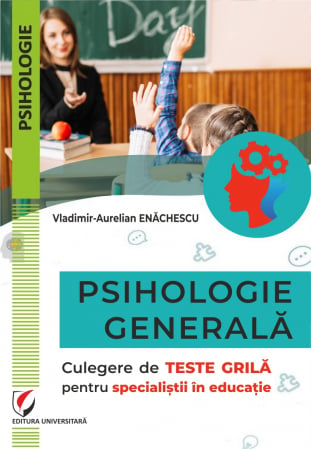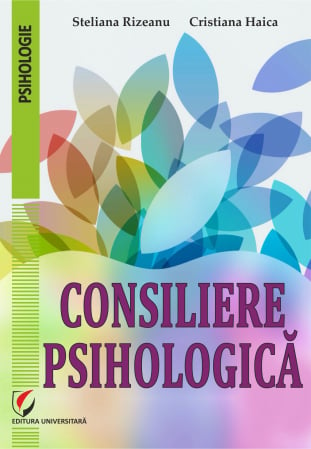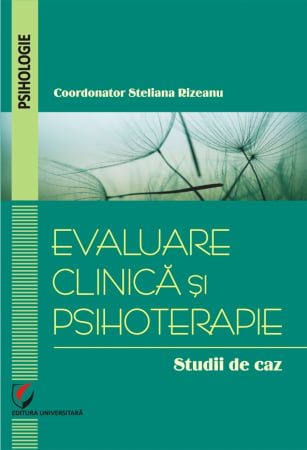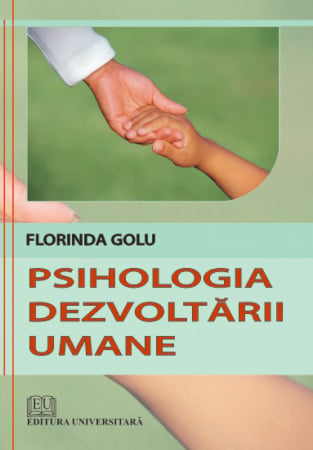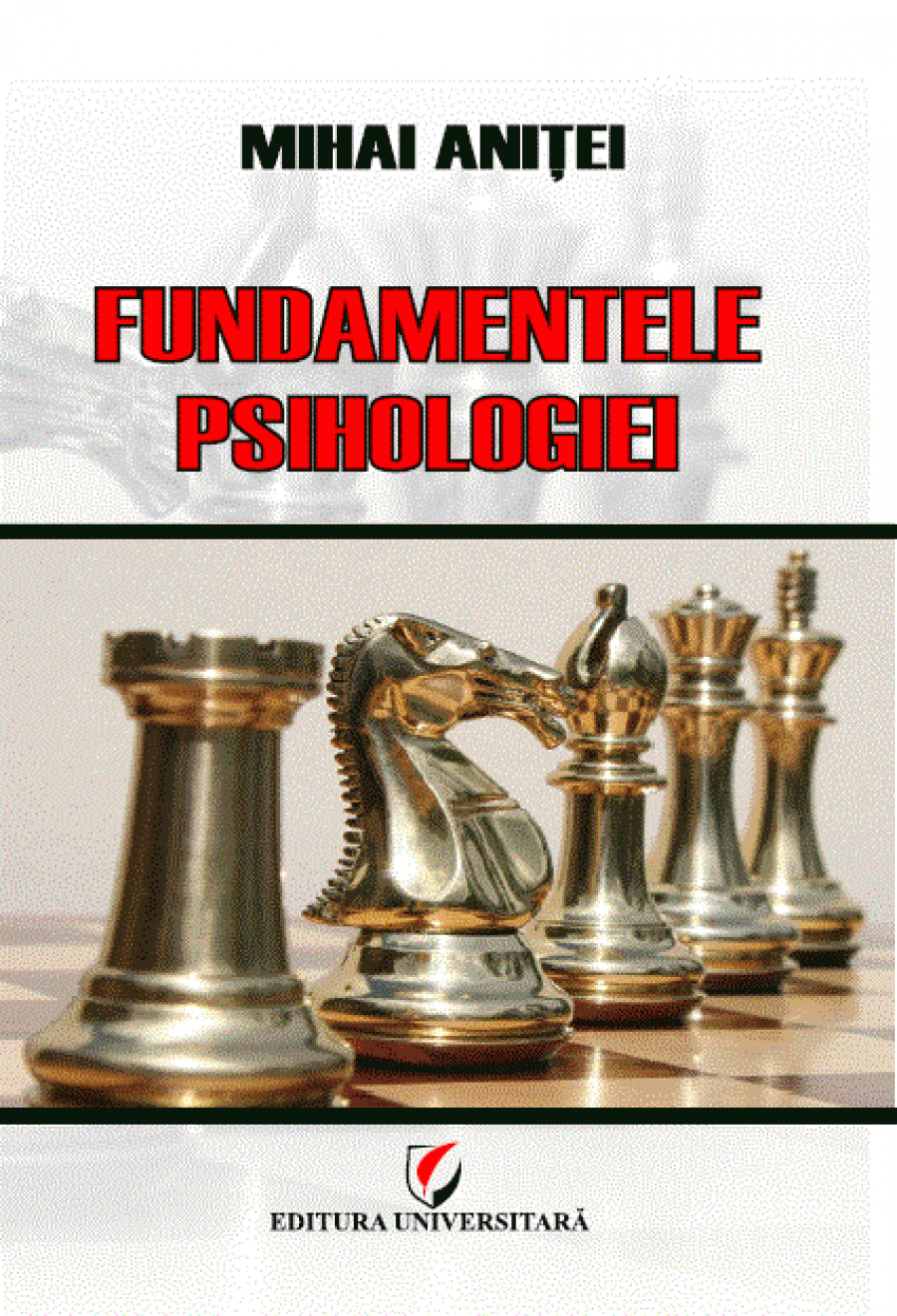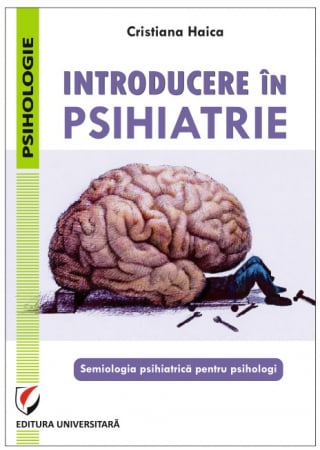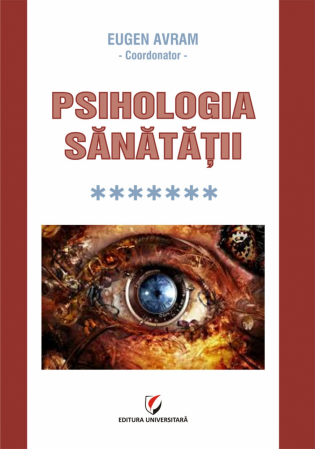Manuscript proposals: [email protected] / 0745 204 115 //// Tracking orders Individuals / Sales: 0745 200 357 / Orders Legal entities: 0721 722 783
ISBN: 978-606-28-1331-4
DOI: https://doi.org/10.5682/9786062813314
Publisher year: 2021
Edition: I
Pages: 162
Publisher: Editura Universitară
Author: Andrei Cotrus
Product Code:
9786062813314
Do you need help?
0745 200 357
- Description
- Download (1)
- Authors
- Content
- More details
- Reviews (0)
The present paper is intended to be a review of the main orientations and directions in dynamic formative assessment, as well as an emphasis on the ways in which it is complementary to the classical one. The need to use dynamic formative assessment is already recognized and is based on the ability of the human being to be modifiable. The use of evaluation methods to target process and development are given by the emergence of new concepts on intelligence, development and cognitive functioning.
-
Psychodiagnosis and evaluation of children with mental weakness through formative-dynamic methods
Download
ANDREI COTRUS
INTRODUCTION / 11
I. CHAPTER I MENTAL DEFICIENCY / 15
1.1. Definitions and terminology of mental deficiency and weakness / 15
1.2. History of the social presence of people with mental disabilities / 18
1.3. Mental deficiency in special pedagogy / 24
1.4. Frequency and dynamics of mental deficiency in the school population / 24
1.5. Etiological factors of mental deficiency / 25
1.6. Genetic or hereditary factors of mental deficiency / 26
1.7. Progenetic factors of mental deficiency / 28
1.8. Extrinsic factors of mental deficiency / 28
1.8. Factors acting prenatally / 28
1.10. Factors acting perinatal / 29
1.11. Factors acting postnatal / 29
1.12. Characteristics and classifications of mental deficiency / 29
1.13. Delay in language development / 31
1.14. Specificity of mental deficiency / 31
1.14.1. The concept of specificity / 31
1.14.2. The limited (restricted) character of the area of next development (ZPD) / 32
1.14.3. Genetic viscosity / 33
1.14.4. Heterochrony of development / 34
1.14.5. Oligophrenic or pathological inertia - expression of cortical dynamics distortion / 35
1.14.6. Stiffness (behavioral reactions) / 36
1.14.7. Fragility and lability of verbal behavior / 36
1.14.8. The fragility of the construction of the personality of the mentally handicapped / 37
1.15. The specificity of psychic functions and processes in mental deficiency / 37
1.15.1. Sensation / 37
1.15.2. Perception / 39
1.15.3. Representation / 39
1.15.4. Thinking / 41
1.15.5. Affectivity / 42
1.15.6. Personality / 43
1.15.7. The language / 44
1.15.8. Memory / 45
CHAPTER II. INTELLIGENT / 47
2.1. The concept of intelligence / 47
2.2. Definitions of intelligence / 50
2.3. Distribution of intelligence / 53
2.4. Theories of intelligence / 55
2.4.1. Contemporary theories of intelligence / 55
Triarchic theory of intelligence (Sternberg) / 55
Gardner's theory of multiple intelligences / 55
Anderson's theory of intelligence and cognitive development / 56
Spearman's bifactorial theory / 60
Thurstone's hierarchical theory / 61
Vernon's hierarchical theory / 61
Piaget 's genetic theory / 62
Guilford's theory of the structure of the intellect / 62
Cattell and Horn / 64's theory of fluid and crystallized intelligence
2.4.2. Recent theories of intelligence / 64
Carroll's three-level hierarchical theory / 64
Intelligence theory regarding planning, attention arousal, simultaneous and successive (PASS) / 66
2.5. The role of heredity and the environment in the genesis of intelligence / 67
2.6. IQ / 67
2.7. Stability and change of IQ over time / 69
CHAPTER III. DYNAMIC FORMATIVE EVALUATION / 73
3.1. Brief history of research in the field of formative-dynamic diagnosis / 73
3.2. Objectives of the dynamic evaluation / 77
a. Optimizing the evaluation of intelligence / 78
b. Evaluation of cognitive modifiability / 79
c. Prediction regarding subsequent acquisitions / 80
d. Implications of Vygotsky's theory on dynamic evaluation / 80
e. Formative orientation in the evaluation and classification of mental deficiencies / 81
3.3. Study paradigms in dynamic evaluation / 84
3.3.1. Criticisms of psychometric techniques (Meltzer & Reid, 1994) / 84
3.4. Arguments for a dynamic approach to evaluation / 85
3.4.1. The role of culture / 85
3.4.2. Theory of structural cognitive modifiability / 85
3.4.3. Assessment of learning potential / 86
3.4.4. Evaluation of the transfer potential / 87
3.4.5. Diagnostic levels / 87
3.4.6. Limits of classical tests / 88
3.4.7. The static nature of the evaluation / 88
3.4.8. Evaluation method / 89
3.4.9. Evaluation of the potential in the area of the next development / 90
3.4.10. Cognitive modifiability and mediated learning / 91
3.4.11. Intentionality and reciprocity / 92
3.4.12. Transcendent / 93
CHAPTER IV. THE SPECIFICITY OF THE EDUCATIONAL, THERAPEUTIC AND RECOVERY PROCESS OF MENTALLY DEFICIENT CHILDREN / 94
4.1. Evaluation and diagnosis of children with mental disabilities / 94
4.1.1. Stages of diagnostic evaluation / 96
4.2. Educational therapy of children with mental disabilities / 97
4.2.1. Cognitive stimulation / 97
4.2.2. Ludoterapia / 98
4.2.3. Occupational therapy / 101
4.2.4. Psychomotor therapy / 103
4.2.5. Formation of personal and social autonomy / 105
4.3. Social representations and attitudes towards mentally deficient people / 106
4.4. Models and forms of school integration of mentally deficient children / 106
4.5. Possible solutions regarding the school integration of the mentally handicapped children / 108
4.6. Functional levels of normalization and quality of life in mentally deficient children / 109
CHAPTER V. RESEARCH METHODOLOGY / 111
5.1. Objectives / 121
5.2. Hypothesis / 111
5.3. Population and sample / 111
5.4. Tools and procedure used in the quantitative analysis / 114
5.4.1. Raven Color Progressive Matrices / 114
5.4.2. Kohs Cube Test / 115
5.4.3. Kohs cube test formative variant / 116
5.4.4. Rey test complex figure / 117
5.4.5. The Rey test is a complex formative variant / 118
5.4.6. SPSS 2.0 / 118 statistical program
CHAPTER VI. ANALYSIS AND INTERPRETATION OF RESULTS / 121
6.1. Results obtained from data analysis and interpretation / 121
6.2. Qualitative analysis of the data obtained after the evaluation with the Rey test complex figure / 133
Limits of research / 149
Applicability and practical utility / 150
Proposals and recommendations / 150
Conclusions / 152
BIBLIOGRAPHY / 156
I. CHAPTER I MENTAL DEFICIENCY / 15
1.1. Definitions and terminology of mental deficiency and weakness / 15
1.2. History of the social presence of people with mental disabilities / 18
1.3. Mental deficiency in special pedagogy / 24
1.4. Frequency and dynamics of mental deficiency in the school population / 24
1.5. Etiological factors of mental deficiency / 25
1.6. Genetic or hereditary factors of mental deficiency / 26
1.7. Progenetic factors of mental deficiency / 28
1.8. Extrinsic factors of mental deficiency / 28
1.8. Factors acting prenatally / 28
1.10. Factors acting perinatal / 29
1.11. Factors acting postnatal / 29
1.12. Characteristics and classifications of mental deficiency / 29
1.13. Delay in language development / 31
1.14. Specificity of mental deficiency / 31
1.14.1. The concept of specificity / 31
1.14.2. The limited (restricted) character of the area of next development (ZPD) / 32
1.14.3. Genetic viscosity / 33
1.14.4. Heterochrony of development / 34
1.14.5. Oligophrenic or pathological inertia - expression of cortical dynamics distortion / 35
1.14.6. Stiffness (behavioral reactions) / 36
1.14.7. Fragility and lability of verbal behavior / 36
1.14.8. The fragility of the construction of the personality of the mentally handicapped / 37
1.15. The specificity of psychic functions and processes in mental deficiency / 37
1.15.1. Sensation / 37
1.15.2. Perception / 39
1.15.3. Representation / 39
1.15.4. Thinking / 41
1.15.5. Affectivity / 42
1.15.6. Personality / 43
1.15.7. The language / 44
1.15.8. Memory / 45
CHAPTER II. INTELLIGENT / 47
2.1. The concept of intelligence / 47
2.2. Definitions of intelligence / 50
2.3. Distribution of intelligence / 53
2.4. Theories of intelligence / 55
2.4.1. Contemporary theories of intelligence / 55
Triarchic theory of intelligence (Sternberg) / 55
Gardner's theory of multiple intelligences / 55
Anderson's theory of intelligence and cognitive development / 56
Spearman's bifactorial theory / 60
Thurstone's hierarchical theory / 61
Vernon's hierarchical theory / 61
Piaget 's genetic theory / 62
Guilford's theory of the structure of the intellect / 62
Cattell and Horn / 64's theory of fluid and crystallized intelligence
2.4.2. Recent theories of intelligence / 64
Carroll's three-level hierarchical theory / 64
Intelligence theory regarding planning, attention arousal, simultaneous and successive (PASS) / 66
2.5. The role of heredity and the environment in the genesis of intelligence / 67
2.6. IQ / 67
2.7. Stability and change of IQ over time / 69
CHAPTER III. DYNAMIC FORMATIVE EVALUATION / 73
3.1. Brief history of research in the field of formative-dynamic diagnosis / 73
3.2. Objectives of the dynamic evaluation / 77
a. Optimizing the evaluation of intelligence / 78
b. Evaluation of cognitive modifiability / 79
c. Prediction regarding subsequent acquisitions / 80
d. Implications of Vygotsky's theory on dynamic evaluation / 80
e. Formative orientation in the evaluation and classification of mental deficiencies / 81
3.3. Study paradigms in dynamic evaluation / 84
3.3.1. Criticisms of psychometric techniques (Meltzer & Reid, 1994) / 84
3.4. Arguments for a dynamic approach to evaluation / 85
3.4.1. The role of culture / 85
3.4.2. Theory of structural cognitive modifiability / 85
3.4.3. Assessment of learning potential / 86
3.4.4. Evaluation of the transfer potential / 87
3.4.5. Diagnostic levels / 87
3.4.6. Limits of classical tests / 88
3.4.7. The static nature of the evaluation / 88
3.4.8. Evaluation method / 89
3.4.9. Evaluation of the potential in the area of the next development / 90
3.4.10. Cognitive modifiability and mediated learning / 91
3.4.11. Intentionality and reciprocity / 92
3.4.12. Transcendent / 93
CHAPTER IV. THE SPECIFICITY OF THE EDUCATIONAL, THERAPEUTIC AND RECOVERY PROCESS OF MENTALLY DEFICIENT CHILDREN / 94
4.1. Evaluation and diagnosis of children with mental disabilities / 94
4.1.1. Stages of diagnostic evaluation / 96
4.2. Educational therapy of children with mental disabilities / 97
4.2.1. Cognitive stimulation / 97
4.2.2. Ludoterapia / 98
4.2.3. Occupational therapy / 101
4.2.4. Psychomotor therapy / 103
4.2.5. Formation of personal and social autonomy / 105
4.3. Social representations and attitudes towards mentally deficient people / 106
4.4. Models and forms of school integration of mentally deficient children / 106
4.5. Possible solutions regarding the school integration of the mentally handicapped children / 108
4.6. Functional levels of normalization and quality of life in mentally deficient children / 109
CHAPTER V. RESEARCH METHODOLOGY / 111
5.1. Objectives / 121
5.2. Hypothesis / 111
5.3. Population and sample / 111
5.4. Tools and procedure used in the quantitative analysis / 114
5.4.1. Raven Color Progressive Matrices / 114
5.4.2. Kohs Cube Test / 115
5.4.3. Kohs cube test formative variant / 116
5.4.4. Rey test complex figure / 117
5.4.5. The Rey test is a complex formative variant / 118
5.4.6. SPSS 2.0 / 118 statistical program
CHAPTER VI. ANALYSIS AND INTERPRETATION OF RESULTS / 121
6.1. Results obtained from data analysis and interpretation / 121
6.2. Qualitative analysis of the data obtained after the evaluation with the Rey test complex figure / 133
Limits of research / 149
Applicability and practical utility / 150
Proposals and recommendations / 150
Conclusions / 152
BIBLIOGRAPHY / 156
The research aims to present some forms of support for the child with mental weakness. Thus, this paper aims to, among other things, provide a method of intervention, an optimal alternative to work in the educational instructional process and recovery of young students with mental weakness.
Dynamic assessment underpins cognitive education, which includes a set of methods and programs aimed primarily at improving intellectual efficiency. Basically, cognitive education is seen as an educational extension of the evaluation of intellectual potential.
Intelligence education in the sense of its development has been largely replaced by specialized or instrumental reduction based largely on a medical conception of reeducation.
Dynamic methods of diagnosing intelligence combine a valid measurement of the intellectual level with the investigation of cognitive functioning, orienting the diagnosis in an educational sense.
Within the formative dynamic orientation, psychodiagnosis aims both to highlight the current level of development of the investigated subject - level explained by its causes and evolution along the stages, and to anticipate, in an active, dynamic development under the influence of learning.
Depending on the objective pursued and the manner in which it is used, any classic psychodiagnostic test can be or can become a formative test.
The theory of mediated learning developed by Reuven Feuerstein can be included in the category of metacognitive theories of learning, which have contributed to changing the concept of intelligence development, redefining the role of school and teachers in achieving learning in children.
According to Reuven Feuerstein's theory, intelligence is a constantly evolving process and not a stable and unchangeable process of personality. The questions formulated by specialists in connection with this issue refer to the conditions that favor the development of the learning potential, to the elements whose presence or absence creates barriers within the process of mutual adaptation between the environment and the person.
The psychodiagnostic act is completed in a formative manner, because it approaches the diagnosis of condition, as Emil Verza calls it, or, in other words, the current state of the subject, not only in terms of etiological diagnosis, but also from the perspective of predicting evolution in the immediate stage. next (prognosis following diagnosis).
However, in the formative dynamic psychodiagnosis, it is not a spontaneous, accidental evolution, but rather an evolution directed in and through the learning activity towards the optimal capitalization of the individual potential of the investigated subjects.
The first formative orientations are considered to be the Piagetian psychogenetic tests, ie the operative tests, the ones by which the cohesion of the state diagnosis with etiological diagnosis, as well as with prognostic elements, was managed in a unitary investigative approach.
The dynamic formative orientation based on the idea of active intervention, of guided influence, in order to maximize the real learning and development capacity of each child, changes the traditional perspective on the diagnosis system, transforming it from a strictly ascertaining, static approach of the investigated subjects. , in a dynamic approach.
In our country, surgical tests have been experienced and used in scientific research, especially by Tiberiu Kulcsar and N. Obrogea.
Therefore, any reference to evaluation was implicitly meant to be made in the context of dynamic evaluation. Today, in the Russian boarding school system, many differentiated classes are organized for children with learning difficulties and school adaptation, including delays and insufficient intellectual development. Having the name of corrective formative training classes, they are based on the principle of early intervention, being organized only at the level of primary classes of regular education. Having a curriculum similar to that of primary education, but staggered, during five years of study instead of four.
The present paper is intended to be a review of the main orientations and directions in dynamic formative assessment, as well as an emphasis on the ways in which it is complementary to the classical one. The need to use dynamic formative assessment is already recognized and is based on the human being's ability to be modifiable. The use of evaluation methods to target process and development are given by the emergence of new concepts on intelligence, development and cognitive functioning.
Dynamic formative assessment is the stage that precedes any cognitive intervention program. It is in no way intended to form new skills or to transform existing intellectual structures. It is the role of cognitive enrichment and education programs to determine structural change. Dynamic evaluation is therefore the starting point for any cognitive intervention, establishing on the one hand the current level of development, as well as the directions and subsequent levels of development.
Dynamic evaluation is an interactive approach to psychological or psychoeducational evaluation that incorporates intervention into the evaluation procedure. This allows the evaluator to determine the subject's response to the intervention. There are a different number of dynamic evaluation procedures that have a wide variety of content areas.
One of the purposes of dynamic assessment is to determine if a student has the potential to learn a new skill.
Dynamic assessment allows an assessment of cognitive processes such as: strategies, habits, ways of thinking.
Dynamic assessment is an alternative assessment that attempts to measure a child's learning potential and is commonly used in combination with standardized tests.
A variety of dynamic evaluation approaches are used as alternative types of evaluation.
One type of dynamic assessment frequently used in the literature is testing - learning period - retesting. This method begins with the administration of a test, considered a pretext, which establishes the current performance of the child.
The purpose of formative dynamic assessment is to assess the learning potential, rather than a static level of development.
Dynamic assessment underpins cognitive education, which includes a set of methods and programs aimed primarily at improving intellectual efficiency. Basically, cognitive education is seen as an educational extension of the evaluation of intellectual potential.
Intelligence education in the sense of its development has been largely replaced by specialized or instrumental reduction based largely on a medical conception of reeducation.
Dynamic methods of diagnosing intelligence combine a valid measurement of the intellectual level with the investigation of cognitive functioning, orienting the diagnosis in an educational sense.
Within the formative dynamic orientation, psychodiagnosis aims both to highlight the current level of development of the investigated subject - level explained by its causes and evolution along the stages, and to anticipate, in an active, dynamic development under the influence of learning.
Depending on the objective pursued and the manner in which it is used, any classic psychodiagnostic test can be or can become a formative test.
The theory of mediated learning developed by Reuven Feuerstein can be included in the category of metacognitive theories of learning, which have contributed to changing the concept of intelligence development, redefining the role of school and teachers in achieving learning in children.
According to Reuven Feuerstein's theory, intelligence is a constantly evolving process and not a stable and unchangeable process of personality. The questions formulated by specialists in connection with this issue refer to the conditions that favor the development of the learning potential, to the elements whose presence or absence creates barriers within the process of mutual adaptation between the environment and the person.
The psychodiagnostic act is completed in a formative manner, because it approaches the diagnosis of condition, as Emil Verza calls it, or, in other words, the current state of the subject, not only in terms of etiological diagnosis, but also from the perspective of predicting evolution in the immediate stage. next (prognosis following diagnosis).
However, in the formative dynamic psychodiagnosis, it is not a spontaneous, accidental evolution, but rather an evolution directed in and through the learning activity towards the optimal capitalization of the individual potential of the investigated subjects.
The first formative orientations are considered to be the Piagetian psychogenetic tests, ie the operative tests, the ones by which the cohesion of the state diagnosis with etiological diagnosis, as well as with prognostic elements, was managed in a unitary investigative approach.
The dynamic formative orientation based on the idea of active intervention, of guided influence, in order to maximize the real learning and development capacity of each child, changes the traditional perspective on the diagnosis system, transforming it from a strictly ascertaining, static approach of the investigated subjects. , in a dynamic approach.
In our country, surgical tests have been experienced and used in scientific research, especially by Tiberiu Kulcsar and N. Obrogea.
Therefore, any reference to evaluation was implicitly meant to be made in the context of dynamic evaluation. Today, in the Russian boarding school system, many differentiated classes are organized for children with learning difficulties and school adaptation, including delays and insufficient intellectual development. Having the name of corrective formative training classes, they are based on the principle of early intervention, being organized only at the level of primary classes of regular education. Having a curriculum similar to that of primary education, but staggered, during five years of study instead of four.
The present paper is intended to be a review of the main orientations and directions in dynamic formative assessment, as well as an emphasis on the ways in which it is complementary to the classical one. The need to use dynamic formative assessment is already recognized and is based on the human being's ability to be modifiable. The use of evaluation methods to target process and development are given by the emergence of new concepts on intelligence, development and cognitive functioning.
Dynamic formative assessment is the stage that precedes any cognitive intervention program. It is in no way intended to form new skills or to transform existing intellectual structures. It is the role of cognitive enrichment and education programs to determine structural change. Dynamic evaluation is therefore the starting point for any cognitive intervention, establishing on the one hand the current level of development, as well as the directions and subsequent levels of development.
Dynamic evaluation is an interactive approach to psychological or psychoeducational evaluation that incorporates intervention into the evaluation procedure. This allows the evaluator to determine the subject's response to the intervention. There are a different number of dynamic evaluation procedures that have a wide variety of content areas.
One of the purposes of dynamic assessment is to determine if a student has the potential to learn a new skill.
Dynamic assessment allows an assessment of cognitive processes such as: strategies, habits, ways of thinking.
Dynamic assessment is an alternative assessment that attempts to measure a child's learning potential and is commonly used in combination with standardized tests.
A variety of dynamic evaluation approaches are used as alternative types of evaluation.
One type of dynamic assessment frequently used in the literature is testing - learning period - retesting. This method begins with the administration of a test, considered a pretext, which establishes the current performance of the child.
The purpose of formative dynamic assessment is to assess the learning potential, rather than a static level of development.
If you want to express your opinion about this product you can add a review.
write a review

6359.png)
![Psychodiagnosis and evaluation of children with mental weakness through formative-dynamic methods [1] Psychodiagnosis and evaluation of children with mental weakness through formative-dynamic methods [1]](https://gomagcdn.ro/domains/editurauniversitara.ro/files/product/large/cotrus-andrei_psihodiagnoza-ei-eval-copii-cu-debilitati-mintale_bt-3217-5024.jpg)
